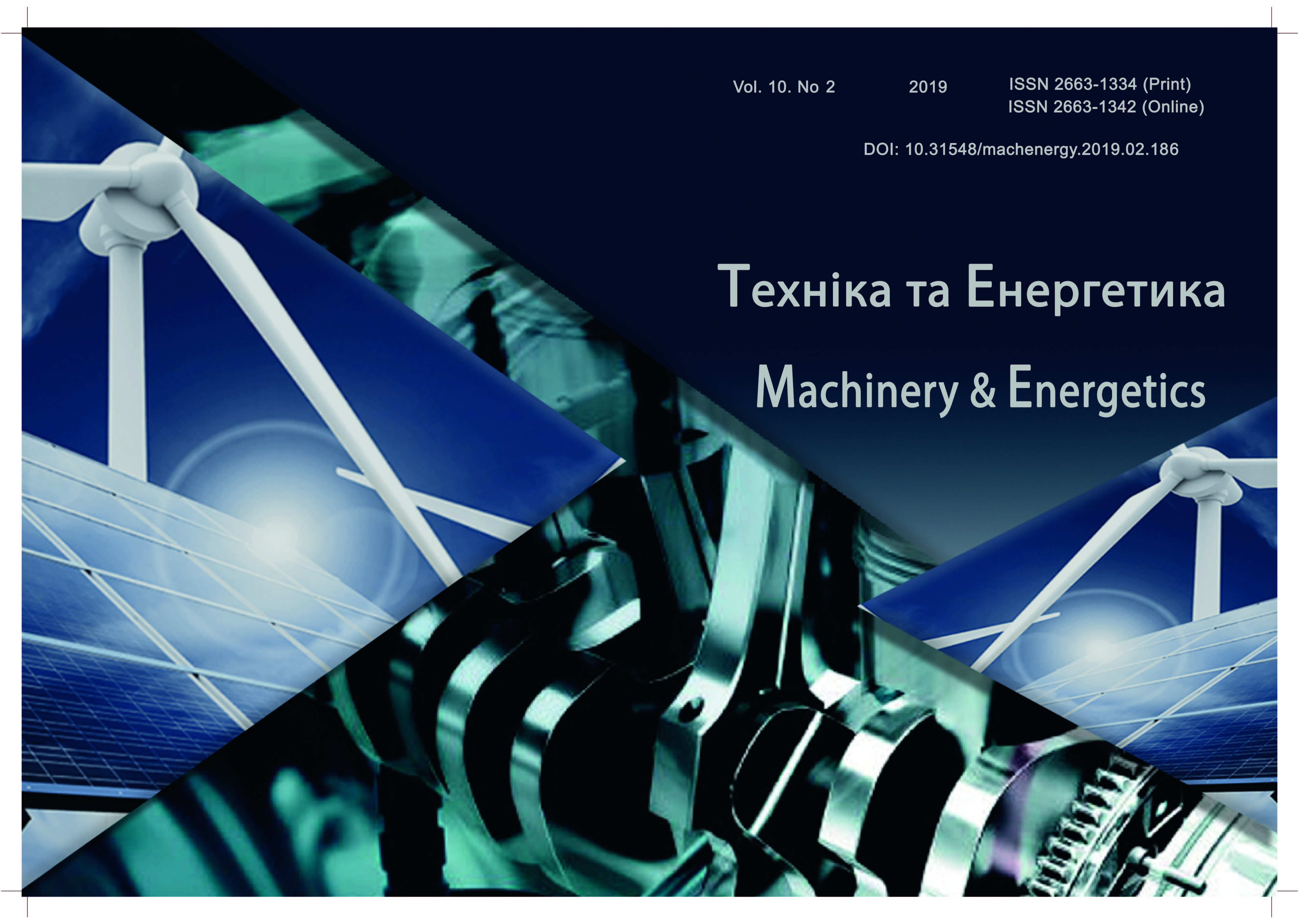Resource-diagnostic model of forecasting the technical status of harvesters
DOI:
https://doi.org/10.31548/machenergy2019.02.155Keywords:
system, norm, repair, production, combine.Abstract
Given and the directions of development of system of technical standards in the repair and manufacture of agriculture. in the article the peculiarities of the analytical approaches to the systematic recovery of forage harvesters. The article concluded that the General formal statement of the problem the assessment of acceptable level of technical condition in the process of management the technical readiness of machines for forestry work makes the possibility of effective use of the developed resource and diagnostic models for technical state of objects and their elements and subsystems in the presence of a quantitative assessment of the influence of the conditions and modes of operation on the intensity of consumption of the resource assigned and an assessment of the actual remaining resource. The use of such formal methods and models for description of technical condition, building a special computer-based software tools enable developers and operational staff to implement a more reliable estimate of accomplishing the object intended for it functions, and more effectively manage the process of maintaining the technical readiness of the object and its subsystems.
References
Kalinichenko D. Yu., Rogovskii, I. L. (2017). Analytical position determination of the coefficient of dynamic parameters of the technical condition of combine harvesters. Technical and technological aspects of the development and testing of new equipment and technologies for agriculture of Ukraine. Doslidnitske. Vol. 21 (35). 55-61.
Kalinichenko D. Yu., Rogovskii, I. L. (2017). Systems analysis and strategies for technical maintenance of combine harvesters and their parts. Scientific Herald of National University of Life and Environmental Science of Ukraine. Series: Technique and energy of APK. Kyiv. Vol. 258. 380-390.
Kalinichenko D. Yu., Rogovskii, I. L. (2017). Artificial cognitive systems in the processes of technical maintenance of combine harvesters. Scientific Herald of National University of Life and Environmental Science of Ukraine. Series: Technique and energy of APK. Kyiv. Vol. 262. 353-361.
Kalinichenko D. Yu., Rogovskii, I. L. (2017). Mathematical apparatus of the description of the route maintenance of combine harvesters in accordance with the detection of combinations of failures.Scientific Herald of National University of Life and Environmental Science of Ukraine. Series: Technique and energy of APK. Kiev. Vol. 275. 337-346.
Kalinichenko Dmytro, Rogovskii Ivan. (2017). Decision for technical maintenance of combine harvesters in system of RCM. MOTROL. Lublin. Vol. 19. No 3. 179-184.
Kalinichenko Dmytro, Rogovskii Ivan. (2017). Modeling technology in centralized technical maintenance of combine harvesters. TEKA. Lublin-Rzeszów. Vol. 17. No 3. 103-114.
Voytyuk, V. D., Rublyov, V. I., Rogovskii, I. L. (2016). System guidelines for quality assurance of technical service of agricultural machinery. Kiev. NULESU. 360.
Rogovskii, I. L. (2015). Recovery Assembly units of agricultural machines. Bulletin of Kharkov National Technical University of Agriculture named Peter Vasilenko. Kharkov. Vol. 159. 224-232.
Rogovskii Ivan. (2014). Stochastic models ensure efficiency of agricultural machinery. Motrol: Motorization and power industry in agriculture. Tom 16. № 3. 296-302.
Rogovskii, I. L. (2017). Conceptual framework of management system of failures of agricultural machinery. Scientific Herald of National University of Life and Environmental Science of Ukraine. Series: Technique and energy of APK. Kiev. Vol. 262. 403-411.
Kalinichenko Dmytro, Rogovskii Ivan. (2018). Method for Determining Time of next Maintenance of Combine Harvesters. TEKA. An International Quarterly Journal on Motorization, Vehicle Operation, Energy Efficiency and Mechanical Engineering. Lublin-Rzeszów. Vol. 18. No 1. 105-115.
Downloads
Published
Issue
Section
License
Relationship between right holders and users shall be governed by the terms of the license Creative Commons Attribution – non-commercial – Distribution On Same Conditions 4.0 international (CC BY-NC-SA 4.0):https://creativecommons.org/licenses/by-nc-sa/4.0/deed.uk
Authors who publish with this journal agree to the following terms:
- Authors retain copyright and grant the journal right of first publication with the work simultaneously licensed under a Creative Commons Attribution License that allows others to share the work with an acknowledgement of the work's authorship and initial publication in this journal.
- Authors are able to enter into separate, additional contractual arrangements for the non-exclusive distribution of the journal's published version of the work (e.g., post it to an institutional repository or publish it in a book), with an acknowledgement of its initial publication in this journal.
- Authors are permitted and encouraged to post their work online (e.g., in institutional repositories or on their website) prior to and during the submission process, as it can lead to productive exchanges, as well as earlier and greater citation of published work (See The Effect of Open Access).

